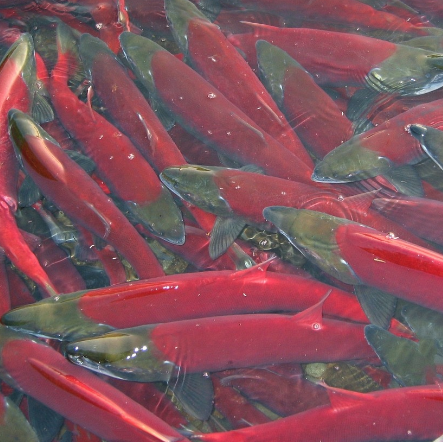Chum Salmon

Chum salmon, also known as dog salmon or calico salmon, are one of the five species of Pacific salmon that return to Puget Sound each year to spawn. They are an important part of the ecosystem, providing food for other fish, birds, and mammals, and helping to fertilize streams and rivers.
Chum salmon are typically smaller than other salmon species, with males averaging around 20 inches in length and females around 18 inches. They have a silvery body with dark green or olive-green back and sides. During spawning season, male chum salmon develop a hooked snout and large canine teeth.
Chum salmon return to Puget Sound to spawn in the fall, typically from October to December. They spawn in the lower reaches of rivers and streams, and in some cases in estuaries. Females dig redds, or nests, in the gravel and lay their eggs. The males fertilize the eggs and then guard the redd until they hatch.
Chum salmon fry emerge from their redds in the winter and spring. They spend a few days in freshwater before migrating to the ocean. Chum salmon fry are important food for other fish, birds, and mammals, such as trout, bass, seals, and sea lions.
Chum salmon spend several years at sea, feeding on plankton and other small organisms. They return to Puget Sound to spawn when they are mature, typically after three to four years.
Chum salmon are an important part of the Puget Sound ecosystem. They provide food for other fish, birds, and mammals, and their carcasses help to fertilize streams and rivers. Chum salmon also play a role in cultural and economic traditions of the Pacific Northwest.
